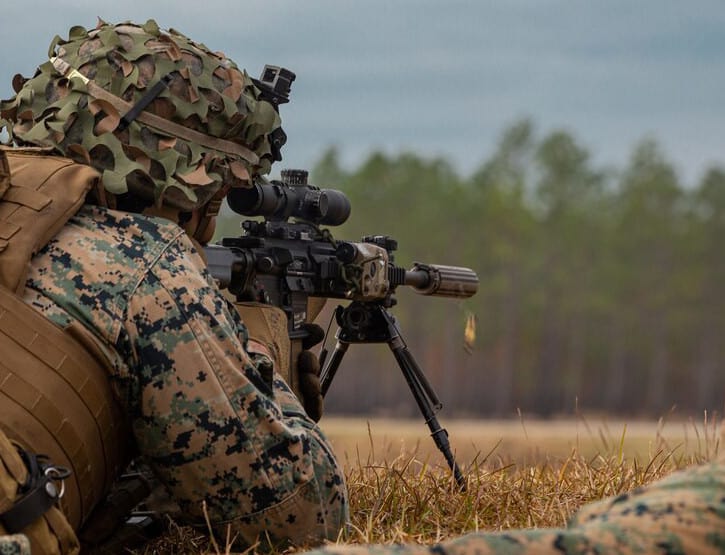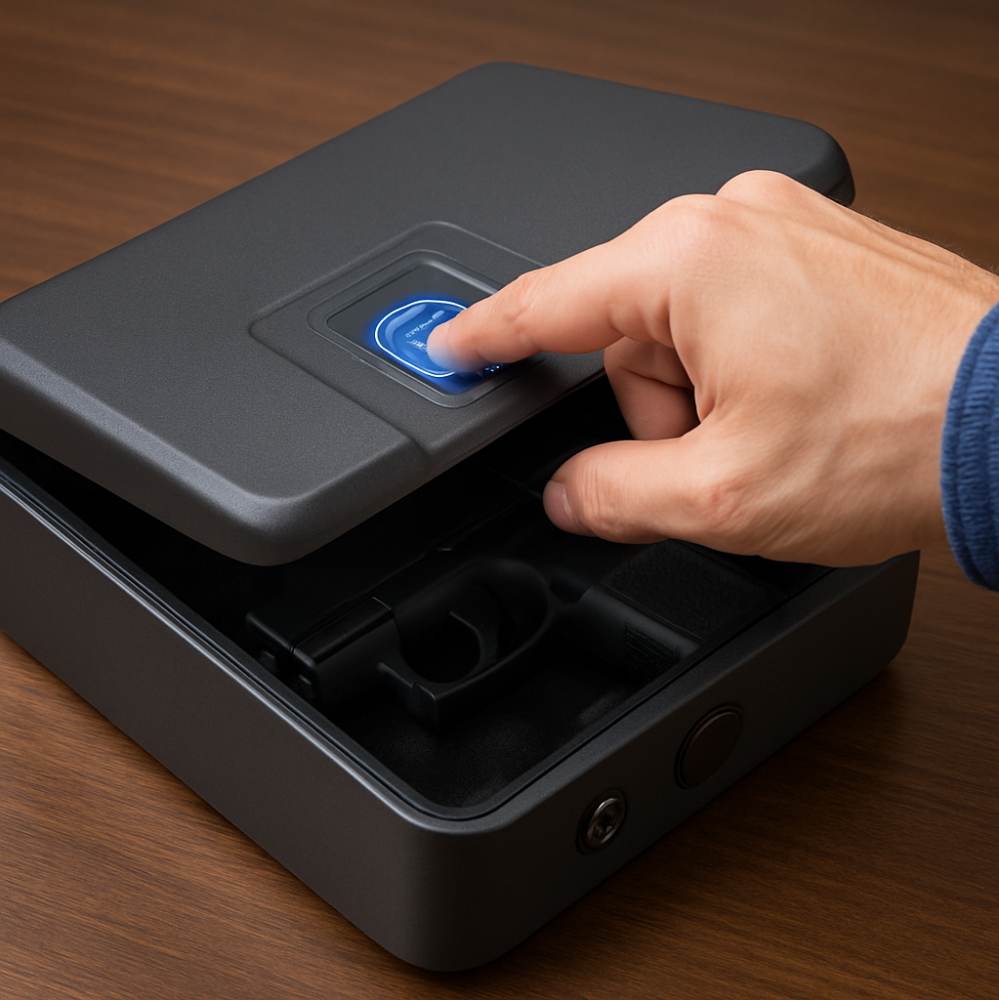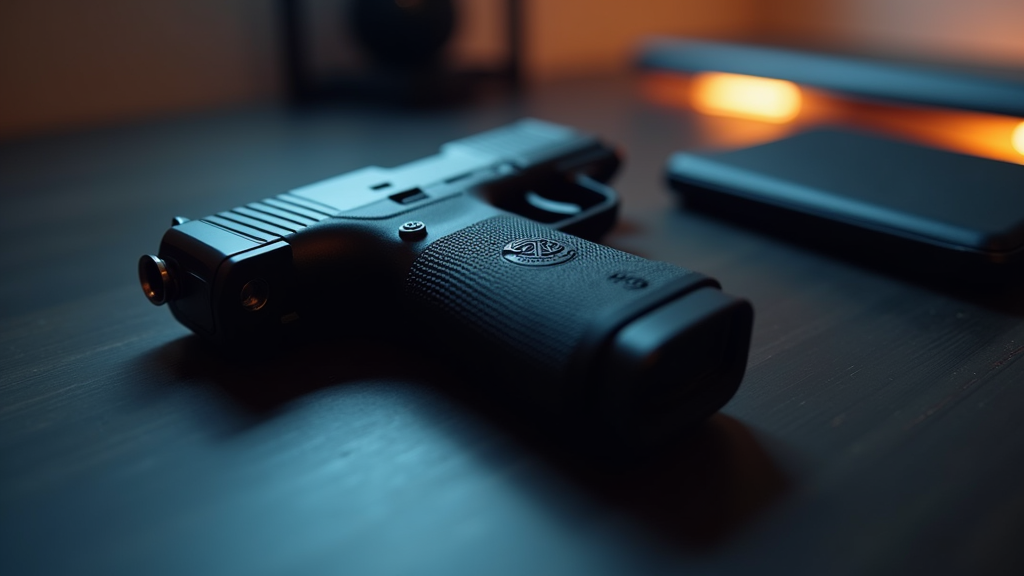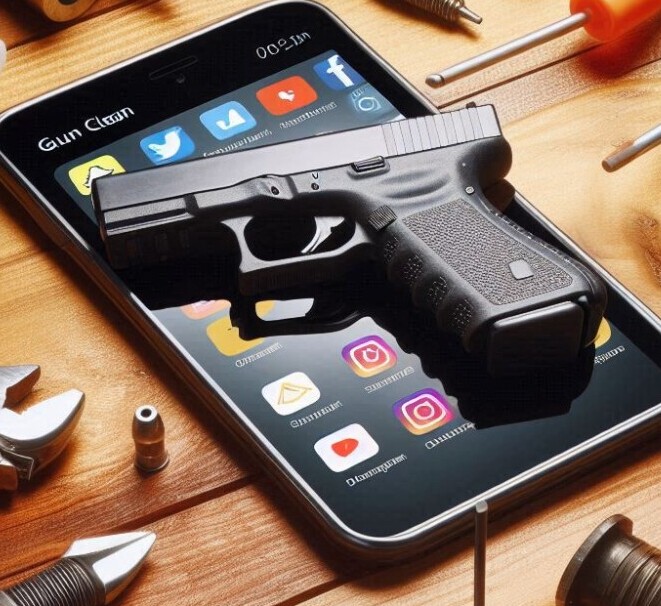In the past gun silencers have been used mainly by gun enthusiasts and hunters looking for a way to reduce gun noise when hunting. However, in recent years gun silencers have become more popular due to increased gun control legislation in some areas. For a short history on gun silencers check out the wikipedia page on gun silencers.
The gun-silencer is a device that reduces the amount of noise created by the gun shot. It is attached to the gun barrel and has a series of chambers that reduce gun noise by slowing down and trapping gun powder particles before they exit the gun barrel. In order to be effective, gun-silencers must be cleaned regularly as burn residue from gunpowder can build up very quickly making them no longer function as well as they should.
The gases, soot and unburnt powder that come out of the gun settle on the lamellas and inner walls of the silencer. This makes a rough surface that is good for oxidation. Oxidation makes the lifespan shorter as well as they should as silencing performance. If this happens a lot, then the non-burnt propellants in the silencer might explode.
Dismountable gun silencers have the gun-silencer divided into several parts which are attached with springs. The gun-silencer breaks down into several pieces for easy cleaning.
The individual components are disassembled and sprayed with or placed in gun oil. After a period of time, they are treated with a brush. If the result is good, the silencer is degreased with a gun part cleaner, for example, and put back together again. We have written about gun cleaning solvents and oils, check this article out for more information.
You must clean and lubricate the screw connections on dismountable models regularly using assembly pastes. For this, the right gun grease is important.
Enclosed gun silencers are designed so that all their components are permanently attached without any seams or joints in order to reduce noise leakage.
It can be hard to clean an enclosed silencer. Even if you put it in gun oil or use an ultrasonic bath, it might not be clean. In this case, it can be helpful to use a cleaner specifically for silencers.
To clean your gun silencer, fill it with this effective soot releaser and leave it in the gun cabinet for 1 to 3 days. The cleaner will loosen the soiling. After the cleaner has been poured out, rinse the silencer with water and shake it.
The residues in the rinsing liquid show that the cleaning result was good. If there is a lot of stubborn dirt, it can help to use a bottle brush. Heating up the cleaner bath to about 85°F to 105°F speeds up the application time. The silencer only needs to be dried after that, and the existing threads might be oiled or greased lightly.
FAQ
What is the best thing to clean a silencer with?
The best thing to clean a silencer (or suppressor) is a dedicated solvent designed for removing carbon, lead, and other debris from the internal baffles and components. Avoid using harsh or abrasive cleaners that may damage the suppressor.
Are you supposed to clean suppressors?
Yes, it’s essential to clean suppressors regularly to maintain their effectiveness and prolong their lifespan. Cleaning removes fouling, ensures proper operation, and prevents potential damage from buildup.
Can you clean a suppressor with brake cleaner?
While some gun owners use brake cleaner for suppressor cleaning, it’s not recommended. Brake cleaner may contain harsh chemicals that could damage the suppressor’s finish and internal components. Use dedicated gun cleaning solvents instead.
Do suppressors ever go bad?
Suppressors have no expiration date, but they can wear out over time or with heavy use. Regular cleaning and proper maintenance can extend their lifespan. If a suppressor’s performance declines significantly, consider having it inspected by a professional.
Can a suppressor get wet?
Suppressors can handle getting wet, especially those made of durable materials like stainless steel and aluminum. However, it’s essential to dry the suppressor thoroughly to prevent potential corrosion.
Is a dirty suppressor quieter?
In some cases, a slightly dirty suppressor may be quieter due to additional baffling created by fouling. However, excessive fouling can negatively impact suppressor performance and accuracy, so regular cleaning is still necessary.
What does a wipe do on a silencer?
A wipe is a soft, replaceable component found in older silencer designs. It helps trap and reduce gas and particulates, making the suppressor more effective at reducing noise. Modern suppressors often use other methods for the same purpose.
Are silencers worth it rust?
Silencers, also known as suppressors, can be susceptible to rust if not properly cared for. Regular cleaning, drying after exposure to moisture, and storing in a dry environment help prevent rust and maintain their effectiveness.
What does shooting a suppressor wet mean?
Shooting a suppressor wet means adding a water-based or gel-based substance, such as water or wire-pulling gel, to the suppressor before firing. The liquid cools and reduces gas escaping, potentially making the suppressor more effective.
Do suppressors make guns dirtier?
Suppressors can increase the amount of fouling in the firearm’s action due to gas blowback and increased backpressure. However, regular maintenance and cleaning address this issue and ensure proper firearm function.




Leave a Reply